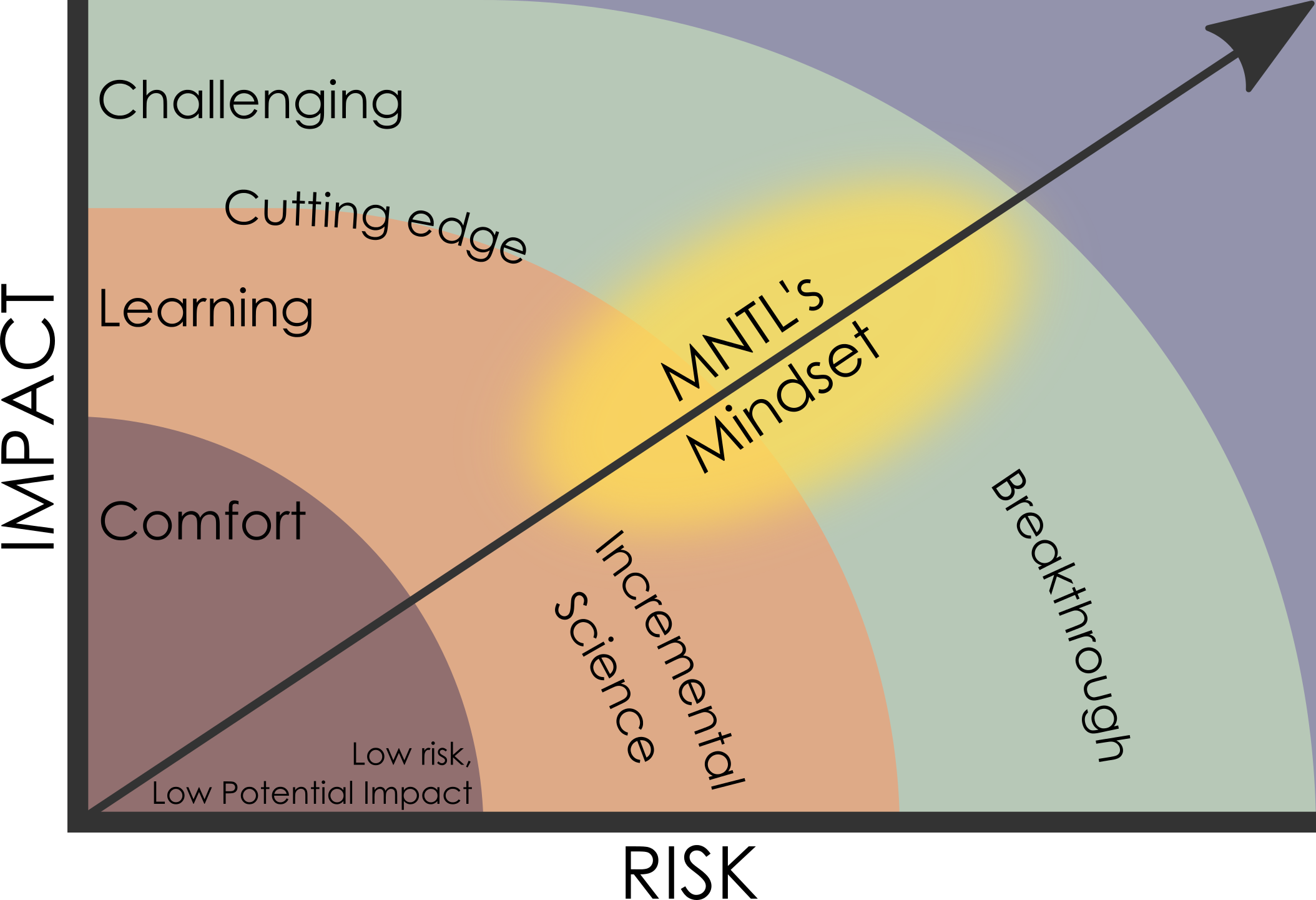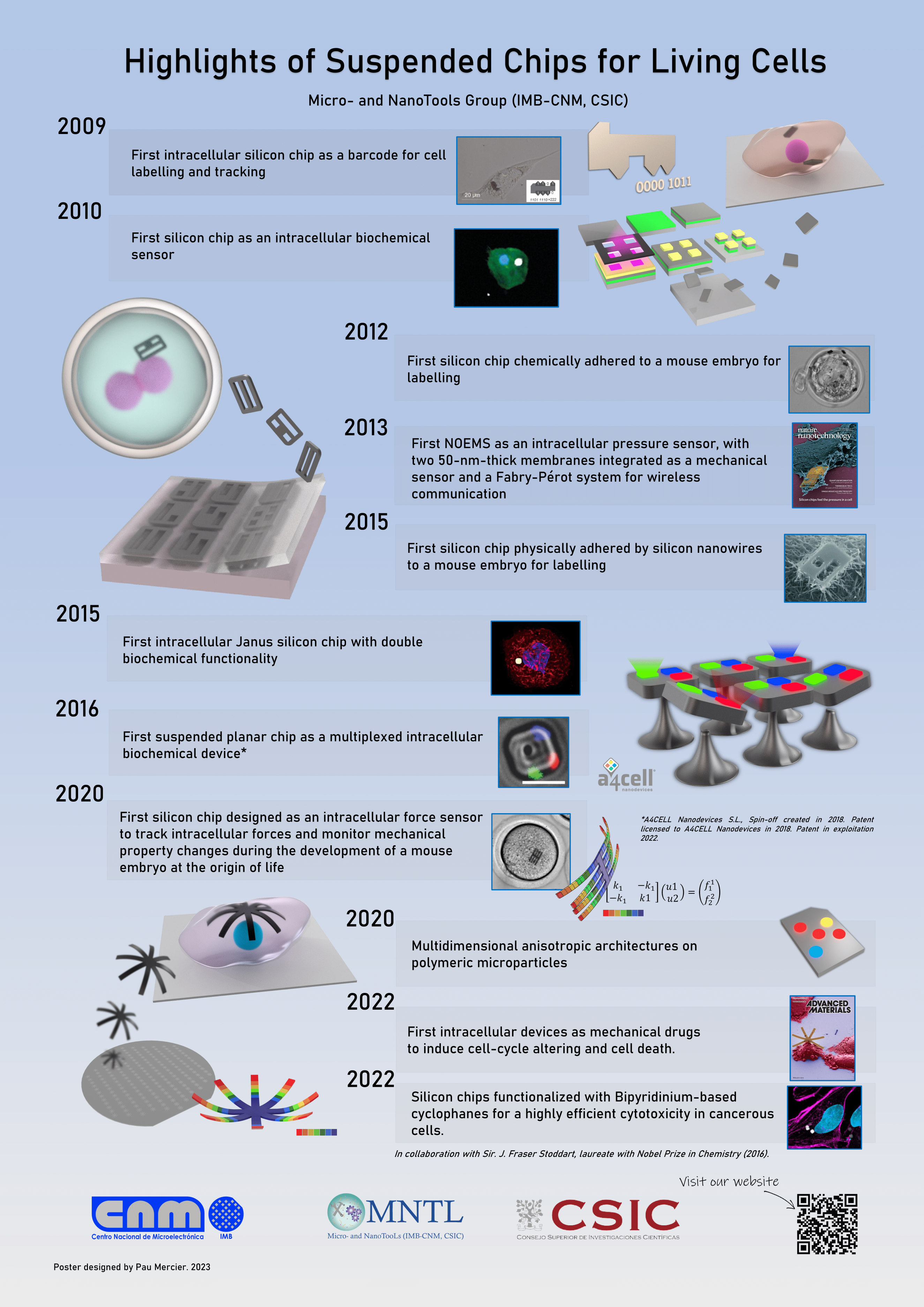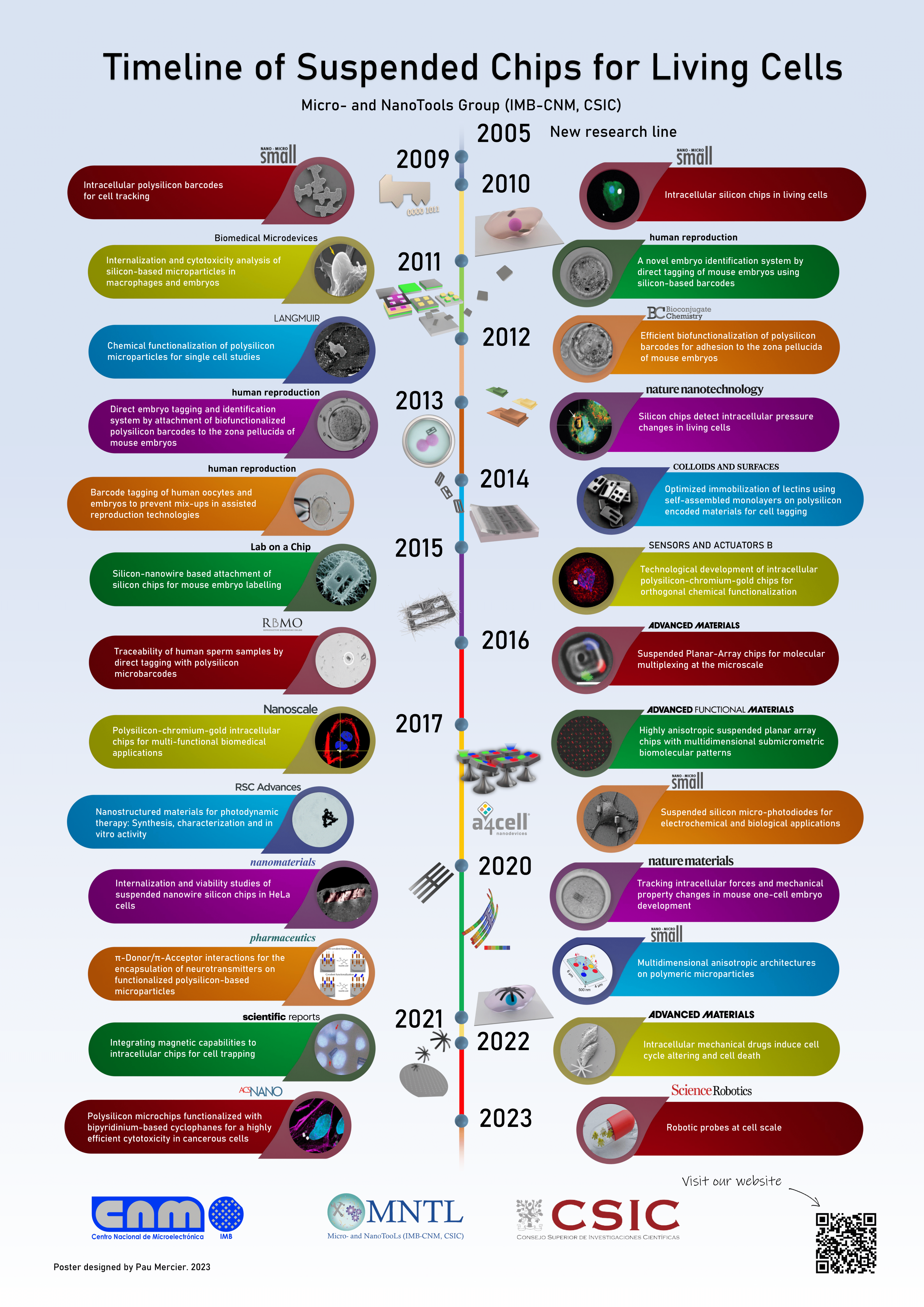The Micro- & NanoTools group was created in 2001 within the frame of Micro- and NanoSystems Department at the Instituto de Microelectrónica de Barcelona, IMB-CNM (CSIC), Cerdanyola del Vallès, Barcelona, Spain. With a strong background in MEMS/NEMS, our main goals are the development of Micro- and NanoTools based on silicon and polymer technologies, to provide unprecedented knowledge related to fundamental problems in science. We are a small but highly multidisciplinary group composed of physicists, engineers, and chemists to allow the design, FEM simulations, fabrication, and characterization of Micro- and Nanosystems.
The research lines encompass Intracellular Chips, Nanogenerators, Opto-Magnetic nanodevices, and Advanced Optomechanical Sensors, working alongside in-house groups such as the MESSI and GAB groups, and national and international research partners.

Suspended chips for applications in living cells
Prof. J. A. Plaza (Orcid: 0000-0002-8595-5580) is the group leader whose work is centered on progressing a worldwide pioneering research line they started in 2005 miniaturizing silicon chips and their subsequent internalization inside living cells for sensing and actuation. They collaborate with Prof. T. Perry, a worldwide reference in embryology (University of Bath, UK), for the study of the mouse embryo mechanics during fertilization (Nat. Materials, 2020). They have started a Sinergia project (SNSF, CH), to track dendritic cells using internalized chips in collaboration with Prof. De Palma, a reference in dendritic cell vaccines for immunotherapy and Prof. M. A. Skrivervik, who has important contributions in implantable and miniaturized antennas.
 |
 |
|
Highlights of Suspended Chips for Living Cells |
Timeline of Suspended Chips for Living Cells |
Focused ion beam was used to cut layers of a cell to reveal an internalized silicon chip.
Energy Harvesting for industrial applications, wearables, and cell biology
Prof. J. Esteve (Orcid: 0000-0001-9440-7984) is a Senior Researcher with important contributions in the field of nanogenerators (i.e. for cell stimulation). The research line has a strong collaboration (EURONANOMED NanoLight EU project) with top neuroscience and vision scientists, Prof. F. Benfenati, (IIT, IT) and Prof. S. Picaud, (Sorbonne Université, F). They collaborate with Prof. Z.L. Wang (Georgia Tech (USA) and BINN (CN)), one of the most renowned scientists in nanoscience and nanotechnology (h index>200), being the inventor of the piezoelectric nanogenerators and pioneer in the field of self-powered systems, and Prof. M. Lee (INHA University, Korea).
Advanced optomechanical sensors (for one-health)
Dr. M. Álvarez (Orcid: 0000-0003-4590-4401) is a Senior Researcher developing smart nanomechancial sensors with advanced functionalities based in the combination of the mechanical properties of semiconductors and polymers and the optical properties of metamaterials and photonic nanostructures. In particular, the work pushes towards a new class of label-free colorimetric mechanical biosensors, based in the structural color change of the sensor, which allows the quantification of its mechanical response by image analysis.
Micro- and nanotools based on silicon, metal and polymer technologies
Dr. B. Sepúlveda (Orcid: 0000-0002-1562-7602) is a Senior Researcher focused on novel opto-magnetic nanodevices enabling wireless actuation and detection with light and magnetic fields for applications in the Health and Environment areas. The following research lines can be highlighted: (i) magneto-plasmonic nanocapsules and immune cells for precision medicine, merging photothermal treatment controlled by opto-magnetic nanothermometry, magnetic localization, imaging, tumor targeting and controlled drug delivery; (ii) wireless opto-magneto-electric cell stimulators to treat neuro-muscular disorders; (iii) opto-magnetic nanoreactors as therapeutic and environmental remediation agents, and enhanced catalytic centers, and (iv) opto-magnetic air disinfection systems. These research lines involve the development of innovative large-scale and cost-effective nanofabrication processes combining bottom-up and top-down strategies.



